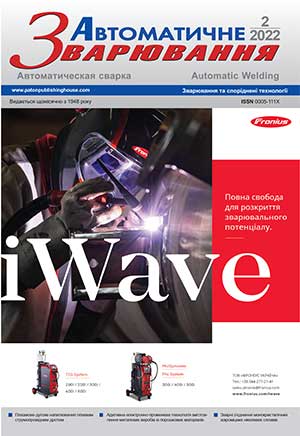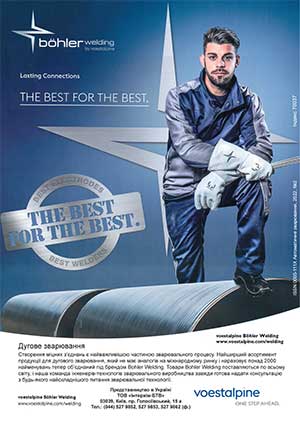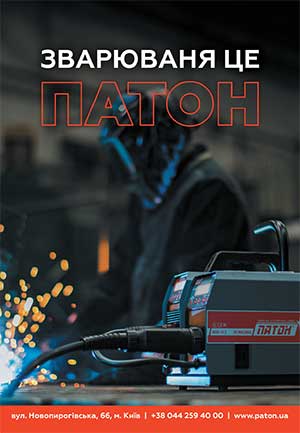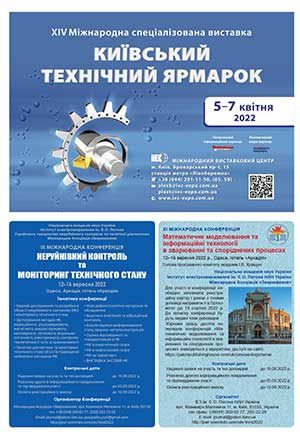| 2022 №02 (04) |
DOI of Article 10.37434/as2022.02.05 |
2022 №02 (06) |
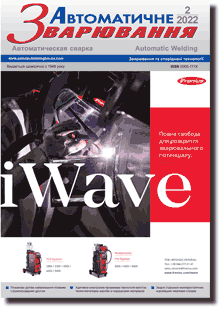
"Avtomatychne Zvaryuvannya" (Automatic Welding), #2, 2022, pp. 33-36
Studies of coatings produced by high-velocity oxyfuel spraying using cermet powder based on FeMoNiCrB amorphizing alloy
Yu.S. Borisov, N.V. Vihilianska, I.A. Demіanov, A.P. Murashov, O.P. Grishchenko
E.O. Paton Electric Welding Institute of the NAS of Ukraine. 11 Kazymyr Malevych Str., 03150, Kyiv, Ukraine. E-mail: office@paton.kiev.ua
The process of producing composite powders based on amorphizing Fe-alloy with the additives of refractory compounds by the method of high-velocity oxyfuel spraying was investigated. For spraying composite powders FeMoNiCrB-(Ti, Cr)C, FeMoNiCrB-ZrB2 were used, produced from a mixture of powders of the compositions by mechanical alloying in a planetary mill. As a result of spraying, dense coatings (porosity is less than 3%) were produced, which were formed from partially deformed particles with a multiphase structure and a uniform distribution of structural components. The results of X-ray diffraction phase analysis indicate the formation of amorphous-crystalline structure in the produced composite coatings. On the radiographic patterns, the maximum peak amplitude from the crystalline phase against the background of the amorphous halo corresponds to the TiCN phase in the coating FeMoNiCrB-(Ti, Cr)C and the ZrB2 phase in the FeMoNiCrB-ZrB2 coating. The size of the measured microhardness for the composite coating FeMoNiCrB-(Ti, Cr)C amounts to – 5.5 ± 0.25 GPa, and for the coating FeMoNiCrB-ZrB2 it is 5.9 ± 0.29 GPa. 15 Ref., 2 Tabl., 3 Fig.
Keywords: high-velocity oxyfuel spraying, amorphous phase, amorphous iron-based alloy, composite powder, composite coating, microstructure, microhardness
Received: 22.11.2021
References
1. Kim, S.W., Namkung, J., Kwon, O. (2012). Manufacture and Industrial Application of Fe-Based Metallic Glasses. Materials Science Forum, 706-709, 1324-1330. https://doi.org/10.4028/www.scientific.net/MSF.706-709.13242. Yuting, D., Guofeng, M. (2020). Research Progress of Febased Amorphous/Nanocrystalline Alloys. IOP Conference Series: Earth and Environmental Science, 565, 012048. https://doi.org/10.1088/1755-1315/565/1/012048
3. Li, H.X., Lu, Z.C., Wang, S.L. et al. (2019) Fe-based bulk metallic glasses: glass formation, fabrication, properties and applications. Progress in Materials Science, 103, 235-318. https://doi.org/10.1016/j.pmatsci.2019.01.003
4. Guo, S.F., Liu, L., Li, N., Li, Y. (2010) Fe-based bulk metallic glass matrix composite with large plasticity. Scripta Materialia, 62(6), 329-332. https://doi.org/10.1016/j.scriptamat.2009.10.024
5. Blink, J., Farmer, J., Choi, J., Saw, C. (2009) Applications in the Nuclear Industry for Thermal Spray Amorphous Metal and Ceramic Coatings. Metallurgical and Materials Transactions A, 40, 1344-1354. https://doi.org/10.1007/s11661-009-9830-4
6. Branagan, D.J., et al. (2006) Wear and Corrosion Resistant Amorphous/Nanostructured Steel Coatings for Replacement of Electrolytic Hard Chromium, ITSC. In: Marple B. (ed.) Proc. of the 2006 ITSC, ASM International, Materials Park, OH. https://doi.org/10.2172/884957
7. Lu, W., Wu, Y., Zhang, J. et al. (2010) Microstructure and Corrosion Resistance of Plasma Sprayed Fe-Based Alloy Coating as an Alternative to Hard Chromium. Journal of Thermal Spray Technology, 20(5), 1063-1070. https://doi.org/10.1007/s11666-010-9611-z
8. Artemchuk, V.V., Astakhov, E.A. (2012) Structure and properties of amorphous renewable iron-based coatings. Visnyk NTU KhPI. Series: New Solutions in Modern Technologies, 26, 10-15 [in Ukrainian].
9. Cheng, J.B., Liang, X.B., Chen, Y.X. et al. (2012) High- Temperature Erosion Resistance of FeBSiNb Amorphous Coatings Deposited by Arc Spraying for Boiler Applications. Journal of Thermal Spray Technology, 22(5), 820-827. https://doi.org/10.1007/s11666-012-9876-5
10. Yugeswaran, S., Kobayashi, A., Suresh, K., Subramanian, B. (2013) Characterization of gas tunnel type plasma sprayed TiN reinforced Fe-based metallic glass coatings. Journal of Alloys and Compounds, 551, 168-175. https://doi.org/10.1016/j.jallcom.2012.09.111
11. Yoon, S., Kim, J., Kim, B.D., Lee, C. (2010) Tribological behavior of B4C reinforced Fe-base bulk metallic glass composite coating. Surface and Coatings Technology, 205(7), 1962-1968. https://doi.org/10.1016/j.surfcoat.2010.08.078
12. Yasir, M., Zhang, C., Wang, W. et al. (2015) Wear behaviors of Fe-based amorphous composite coatings reinforced by Al2O3 particles in air and in NaCl solution. Materials & Design, 88, 207-213. https://doi.org/10.1016/j.matdes.2015.08.142
13. Lampke, T., Wielage, B., Pokhmurska, H. et al. (2011) Development of particle-reinforced nanostructured ironbased composite alloys for thermal spraying. Surface and Coatings Technology, 205(12), 3671-3676. https://doi.org/10.1016/j.surfcoat.2011.01.003
14. Wang, S., Cheng, J., Yi, S.-H., Ke, L. (2014) Corrosion resistance of Fe-based amorphous metallic matrix coating fabricated by HVOF thermal spraying. Transactions of Nonferrous Metals Society of China, 24(1), 146-151. https://doi.org/10.1016/S1003-6326(14)63040-5
15. Borysov, Yu.S., Borysova, A.L., Burlachenko, O.M. et al. (2021) Composite powders based on FeMoNiCrB amorphizing alloy with additives of refractory compounds for thermal spraying of coatings. The Paton Welding J., 11, 38-47. https://doi.org/10.37434/as2021.11.08
Advertising in this issue:
The cost of subscription/purchase order journals or individual articles
| Journal/Currency | Annual Set | 1 issue printed |
1 issue |
one article |
| TPWJ/USD | 384 $ | 32 $ | 26 $ | 13 $ |
| TPWJ/EUR | 348 € | 29 € | 24 € | 12 € |
| TPWJ/UAH | 7200 UAH | 600 UAH | 600 UAH | 280 UAH |
| AS/UAH | 1800 UAH | 300 UAH | 300 UAH | 150 UAH |
| AS/USD | 192 $ | 32 $ | 26 $ | 13 $ |
| AS/EUR | 180 € | 30 € | 25 € | 12 € |
| SEM/UAH | 1200 UAH | 300 UAH | 300 UAH | 150 UAH |
| SEM/USD | 128 $ | 32 $ | 26 $ | 13 $ |
| SEM/EUR | 120 € | 30 € | 25 € | 12 € |
| TDNK/UAH | 1200 UAH | 300 UAH | 300 UAH | 150 UAH |
| TDNK/USD | 128 $ | 32 $ | 26 $ | 13 $ |
| TDNK/EUR | 120 € | 30 € | 25 € | 15 € |
AS = «Automatic Welding» - 6 issues per year;
TPWJ = «PATON WELDING JOURNAL» - 12 issues per year;
SEM = «Electrometallurgy Today» - 4 issues per year;
TDNK = «Technical Diagnostics and Non-Destructive Testing» - 4 issues per year.






